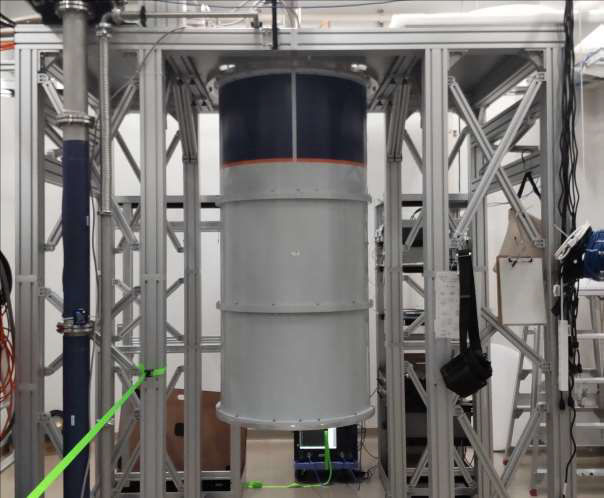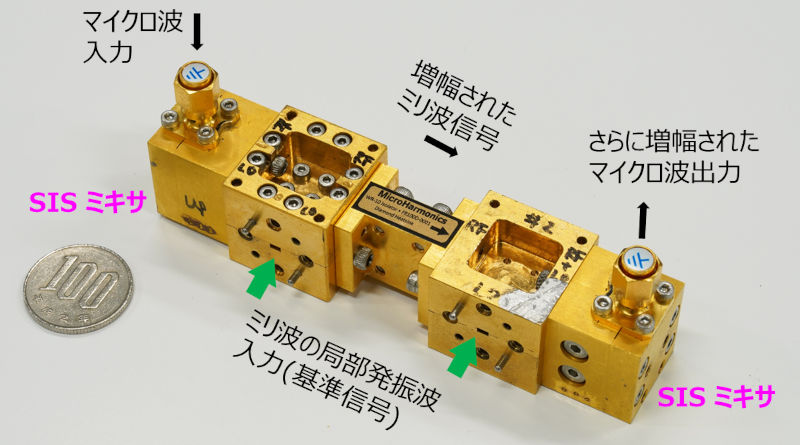Progress Report
Development of Integration Technologies for Superconducting Quantum Circuits[2] Research and development of qubit-integrated hardware systems
Progress until FY2024
1. Outline of the project
In the typical setup of today's superconducting qubit circuits, qubit chips placed at cryogenic temperatures and microwave electronics operating at room temperature are connected by using one or more coaxial cables per qubit. However, this method cannot scale up to tens of thousands of qubits or more due to the limitations of space and cooling power of the dilution refrigerator. To solve this problem, this R&D theme aims to develop hardware technologies around quantum chips, such as a high-capacity dilution refrigerator with high cooling capacity and connector-less high-density wiring, to break through the wiring bottleneck for integration.
The key in this development is how to control and do signal processing in the vicinity of quantum bits to reduce wiring between different temperature stages. Therefore, we are developing a "vertical integration" quantum bit module, in which the signal processing circuit that controls and reads out the quantum bits and the quantum bits are separated in different chips and connected by bump bonding. For the dilution refrigerator, we have manufactured the dilution refrigerator, which is used for a fully Japan-made quantum computer to test the component technologies developed in the project.

2. Outcome so far
① Development of Vertically Integrated Mounting Structure
Design, prototyping, and evaluation experiments are underway to realize a vertically stacked module with vertical signal transmission. Specifically, we are working on technology to create an intra-substrate coaxial structure using through silicon vias (TSVs), micro indium solder bumps for inter-substrate connection, and superconductive electrodes. First, we have developed chip fabrication and flip-chip-bonding technology for stacking three six-layered chips (assuming a qubit substrate, readout substrate, and upper wiring substrate). Furthermore, we designed and fabricated the vertical input/output package for the vertically integrated mounting module with stacked chips. We constructed the cryocooler with magnetic shields and electrical measurement system environment to evaluate the low-temperature electrical characteristics. Using this cryogenic measurement system, we have successfully demonstrated transmission characteristics with sufficiently low insertion loss of less than 1dB in between 1 GHz and 10 GHz, for a test sample of stacked two chips.

② Development of the testbed dilution refrigerator
The testbed dilution refrigerator was designed, assembled and tested in-house at ULVAC, with a performance target of 400 μW of cooling capacity at 100 mK. After optimizing operating parameters and taking measures against heat from the external environment, in-house testing finally confirmed a cooling capacity of 690 μW, achieving the target performance*1. The refrigerator was then transferred to the University of Osaka, where the final assembly of the fully Japan-made quantum computer was completed in the fiscal year, achieving the milestone goal.
*1 After the transfer was completed, testing conducted in April 2025 confirmed a cooling capacity of 780 μW.


3. Future plans
For the vertical transmission-type mounting module, we will continue setting up the evaluation environment for its high-frequency properties. We also plan to design and fabricate a prototype of three-substrate and six-layer sample with stacked qubit and readout circuit and proceed to evaluation experiments.
For the testbed dilution refrigerator, we will make a cloud-based public release of the fully Japan-made quantum computer at the Expo 2025 Osaka, Kansai, Japan. Through this operation, we will also establish the reliability of dilution refrigerators for quantum computers, which require long-term stable operation.